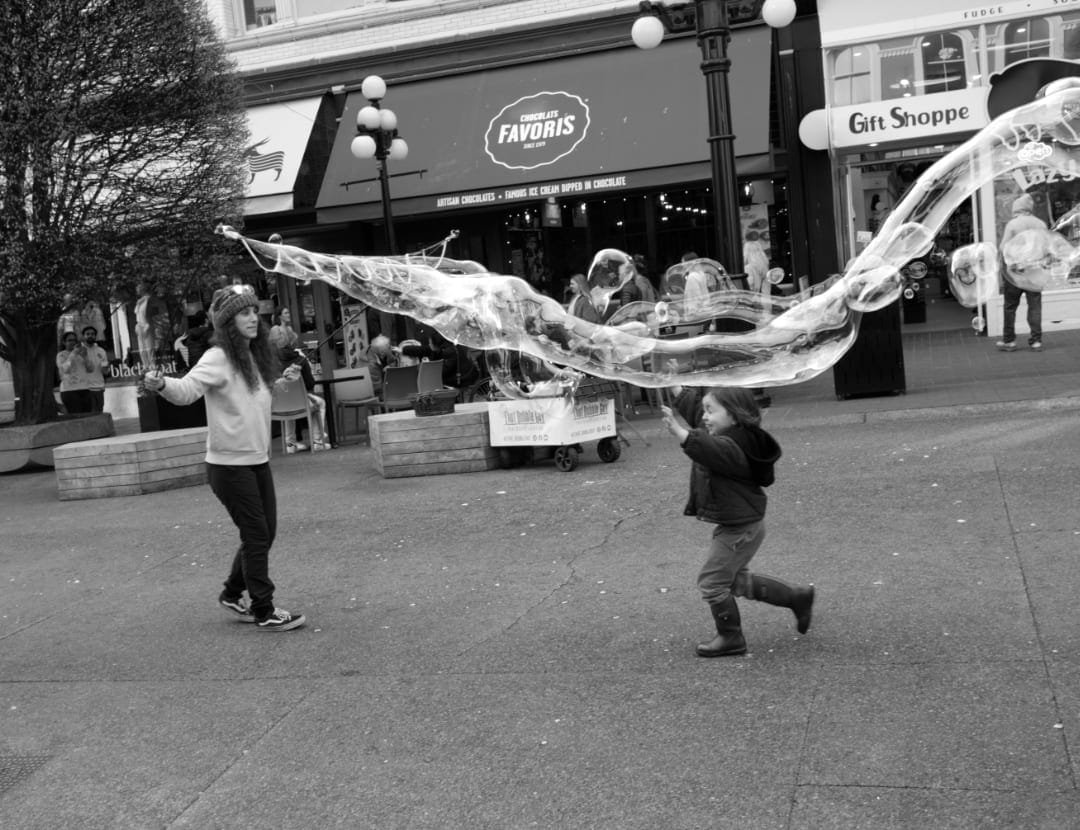The first time I stepped onto the street with a camera, I had no idea what I was really looking for— all I knew was that I wanted to get good at it.
So I made a plan, drafted a rough project to work on, and then got out on the road again to start shooting. The first couple of months were great. I managed to get some decent photos for my project. I knew, as a complete beginner, they were nowhere near the level of a professional street photographer—but I didn’t need them to be. For now, this was just a hobby.
Still, I wanted to get better. So I kept going down the street, camera in hand, making photographs over and over until I had built up a respectable collection.
And then, after four or five months, I sat down and looked at all of it. What I saw deeply worried me. There was no improvement—or at least not the kind I had expected.
Here’s what I noticed:
- I wasn’t getting close enough to my subjects.
- I was taking the same type of photograph over and over.
- I was chasing clichés.
- And most of all, I was trying to hide all of the above with color.
That last part was the one that really got to me. Because that’s how social media works. I was creating pictures designed for that fraction-of-a-second dopamine hit during someone’s Instagram swipe.
There’s nothing wrong with those kinds of pictures. But it wasn’t where I wanted to be.
And that’s when I realized there was only one way to deal with all these issues: I had to convert all of my work into black and white.
Here’s how that shift completely changed my approach to photography, kept me grounded, and pushed me towards my goals in photography.
Key Takeaways:
1
Black and white photography sharpens your eye and your thinking
Shooting in black and white forces you to focus on composition, light, shadow, and the essence of the scene. Without color to “save” the photo, you slow down, think harder, and capture moments that actually matter.
2
It’s a choice, not a skill
Black and white won’t magically make you a better photographer. But it trains you to truly see what matters on the streets, helping you avoid clichés and distractions.
3
It elevates storytelling in street photography
By stripping away color, black and white highlights gestures, shapes, textures, and emotion. It turns ordinary moments into stories that linger—and makes you a photographer who can create real impact.
There’s a subtle difference between ‘showing something’ and taking a ‘good photograph’
American documentary photographer Lewis Hine once said, “If I could tell the story in words, I wouldn’t need to lug a camera.” There’s always something we’re trying to capture in a photograph that can’t be translated into words.
Take the documentary Salt of the Earth. In one scene, Sebastião Salgado and his son spend days trying to track down a polar bear. When they finally find it, he takes the shot—but he isn’t happy. He says: “We have a document of the bear, but we do not have a photo. This is not right. There’s nothing behind. Nothing to frame the photo, to suggest the landscape.”
That difference between a “document” and a “photo” is huge.
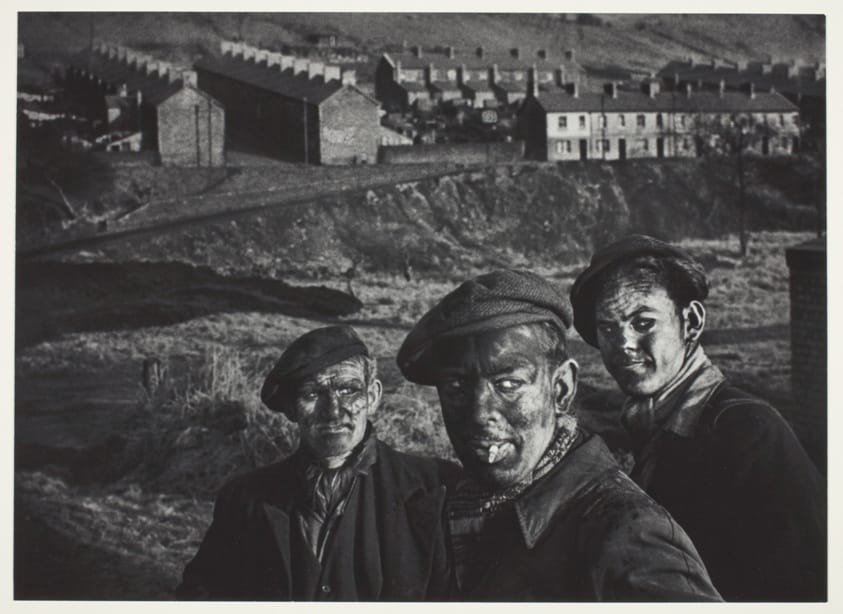
Most of us, with our phone cameras, are simply documenting. We’re collecting what I like to call “proof of being there” photos. They’re memories, and they work perfectly well for us in everyday life. But for photographers—especially in street or documentary work—the goal is different. It’s about capturing the essence of a situation, telling a story, and making an impact.
Garry Winogrand, one of the most influential New York photographers, said it best in an interview: “How do you make a photograph that’s more interesting than what happened. That’s really the problem.” (Source: youtube)
With all these insights, I asked myself: What do I need to make this happen? How do I make a photograph of a scene—not just a document of it? How do I make a photograph that’s more interesting than the scene itself?
As it turns out, when I carefully went through all the photos in my street photography portfolio, I realized I’d been asking the wrong questions.
It’s about having the right recipe
I realize that if I don’t make an effort to keep things simple and organized in my photography practice, everything quickly moves toward chaos.
The technical side of photography has come a long way. Today, there are endless resources, techniques, and conveniences. You can edit your photos, remove objects afterward, tweak colors, and do much more. But less is often more—especially if you’re just starting out.
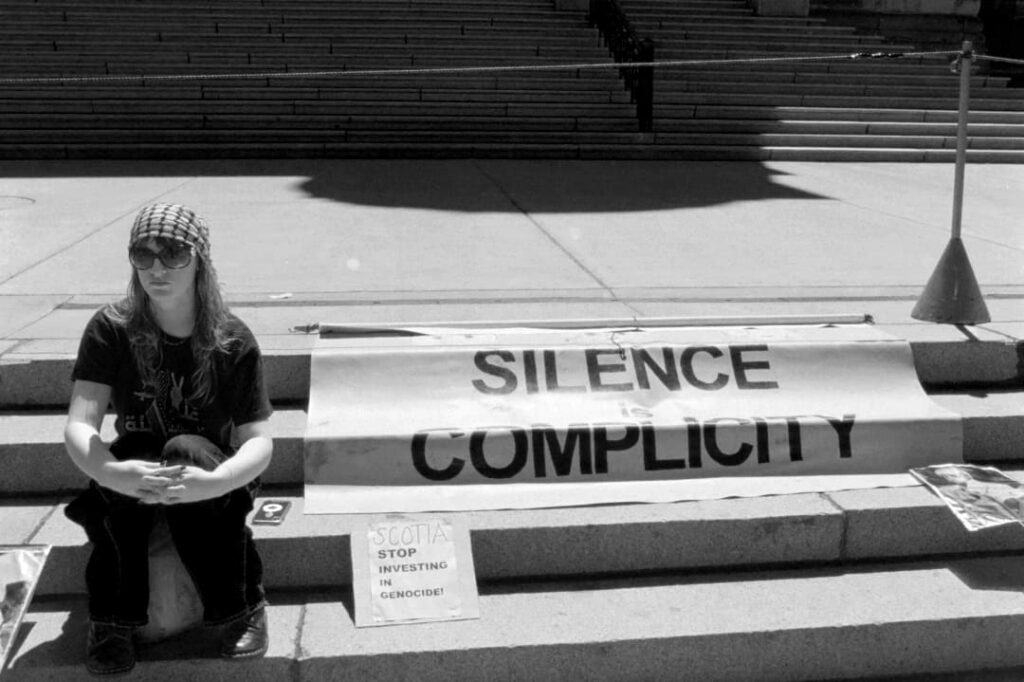
Instead of asking myself, What do I need to make my photographs better?I began asking a different set of questions:
- What do I not need?
- What can I strip away that has become the norm in photography today?
- How do I reduce my technique down to the bare minimum, so I can consciously rebuild it in a way that aligns with my goals?
- How do I take control of the output, instead of letting the camera decide?
The answer surprised me. It turns out, I don’t need a lot of what a modern camera offers. So I made two decisions. First, to shoot film (which I’ll save for another post). Second, to shoot in black and white.
Shooting black and white is not the same as removing color from a photograph
Black and white photography is something we often overlook. For a very long time, no matter what photograph I looked at, I automatically converted it into greyscale in my mind. But with little to no knowledge about the field, I couldn’t really pinpoint why I was doing it.
Also, 2025 is not the best time for black and white photography. Why do you ‘remove’ the color?, people would ask. Still, this whole process of thinking about how to make photographs better made me stop and spend some time reflecting on it.
What I realized is something many others have also shared, and Ted Grant expressed it perfectly:
“When you photograph people in color, you photograph their clothes. But when you photograph people in Black and white, you photograph their souls!”
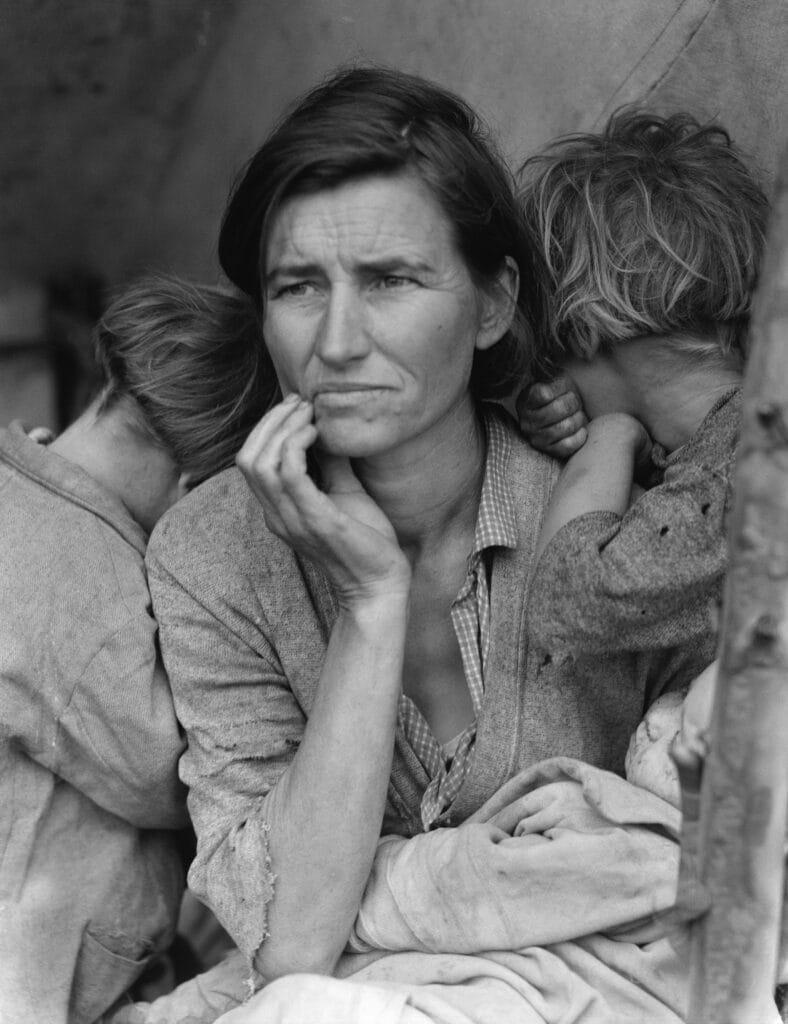
Now, this argument, in the conventional sense, does sound a bit funny—I know. Especially nowadays, we take photos in color, and only if we feel like it we convert them into black and white. That makes it feel as if we’re taking something away from the photo, not adding something.
But that’s not necessarily the case. In photography, it’s the act of taking the photo that makes all the difference, even more than the output itself. For instance, if you know you’re going to shoot in black and white, the entire approach you take to creating that picture changes.
Shooting black and white photography is not a skill, it’s a choice
To begin with, if you decide to shoot only in black and white, you know from the start that no color will be there to “save” your photograph. That awareness changes everything, even before you take the shot.
This is one of the reasons I started shooting film. When I load a roll of black and white film into the camera, I know the next 36 frames are going to be black and white. I can’t just switch back to color mid-roll. That limitation forces me to make an effort to capture the essence of the scene.
And that’s the most important thing.
Shooting black and white means I have to think harder about how I approach my subject—when to press the shutter, how to set the depth of field, and where elements should sit inside the frame. With color, I don’t remember ever lifting my camera and then deciding not to take the picture. But with black and white, most of the time I raise the camera, look through the viewfinder, and ask myself if the composition is really there. If it isn’t, I wait. And if the right moment doesn’t come, I don’t shoot at all.
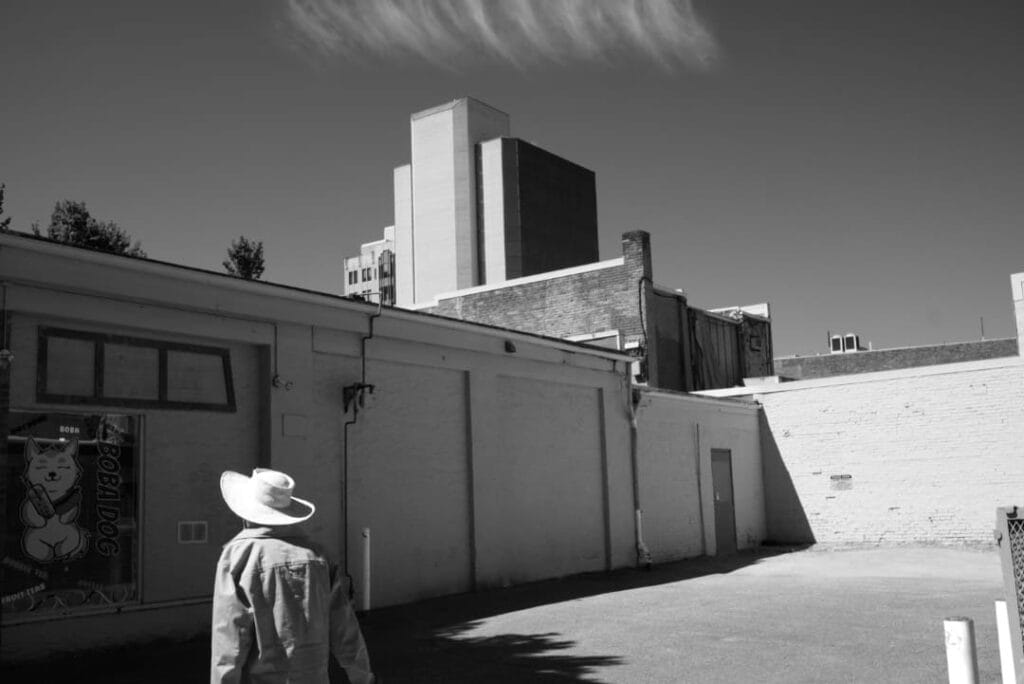
The ratio flipped. Now I spend 80% of the time thinking and only 20% shooting. Before, with color, it was the complete opposite. Of course, that means I take far fewer pictures overall. At first, it felt like it slowed me down. But in reality, the act of thinking more deeply about each frame pushes me closer to my goals.
So at the end of the day, black and white doesn’t slow you down—it does the opposite. It speeds you up by forcing you to focus on what really matters.
Black and white photography is the closest we can get to a fourth dimension
In the book Interaction of Color, Josef Albers writes: “Black and white photography registers all lights lighter and all darks darker than the more adjustable eye perceives them.” That’s what makes black and white feel different. Our eyes are always adjusting, softening shadows and toning down highlights, but a photograph can’t do that. It shows the extremes, all at once. Suddenly, shapes, textures, light, and shadow emerge in ways color would hide. It’s not about what’s there—it’s about what you feel and what exists between the shadows and the highlights.
When I look at my earlier color photos, the problems appear in subtler ways. They’re vibrant, visually pleasing, but they rarely resonate in my mind. I’ve captured a neon sign, a red jacket, or a sunrise spilling into a narrow alleyway—sure, they look ‘interesting’, but afterward I’d ask myself, so what? and I didn’t have an answer. Not that these images couldn’t make an impact on others, but they didn’t align with my goals.
Color dominates perception. It can distract from gestures, geometry, or emotion. One issue is that it can fool you into thinking you’re capturing something meaningful when really you’re capturing very little. You might believe your photo works, yet something feels hollow. That’s the symptom of over-reliance on color and over-documentation.
When I switched to black and white, I began noticing details I’d missed in color: the way a shadow bisects a sidewalk, the tension in a gesture, the poetry in mundane street scenes. Black and white forces you to compose—or fail spectacularly.
But this isn’t a thesis arguing that color photography is “bad”. Color photography has its place in the world.
That said, there’s no future without color photography
Theres a saying that goes, “If you go to a bat’s wedding, you must hang upside down”.
Photography, like life, sometimes requires a shift in perspective. The world is constantly changing and evolving, and photography should adapt along with it.
Back in the 1950s, legends like Henri Cartier-Bresson dismissed color entirely, saying, “Color is bullshit”. We can’t really blame him—at the time, black and white was the norm, the standard of the craft. But photography has come a long way since then.
Today, context matters. Would you rather watch your favorite sports team play a match in black and white? Would you want to see Steve McCurry’s iconic Afghan Girl photo, which made such a tremendous impact, in black and white? Or would you want to see a menu of delicious-looking food in black and white?
Of course not.
Photography evolves, and so do the expectations of its audience.
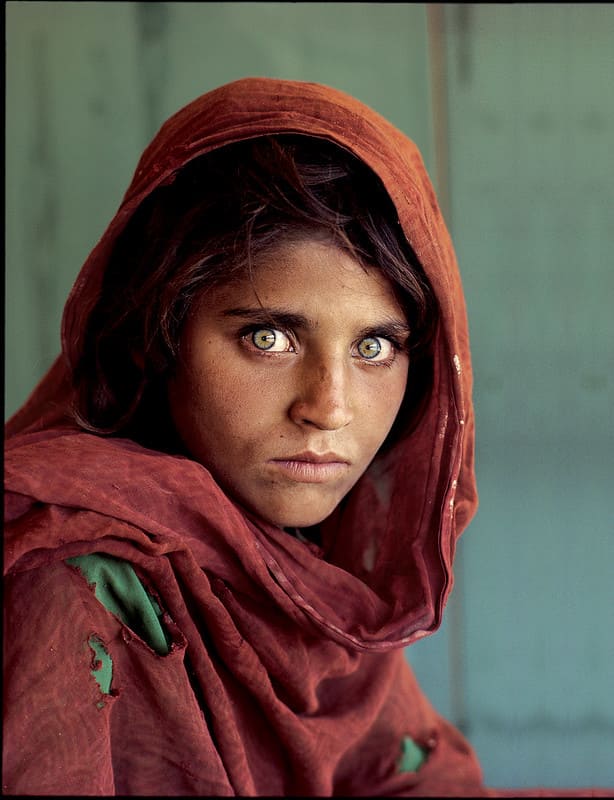
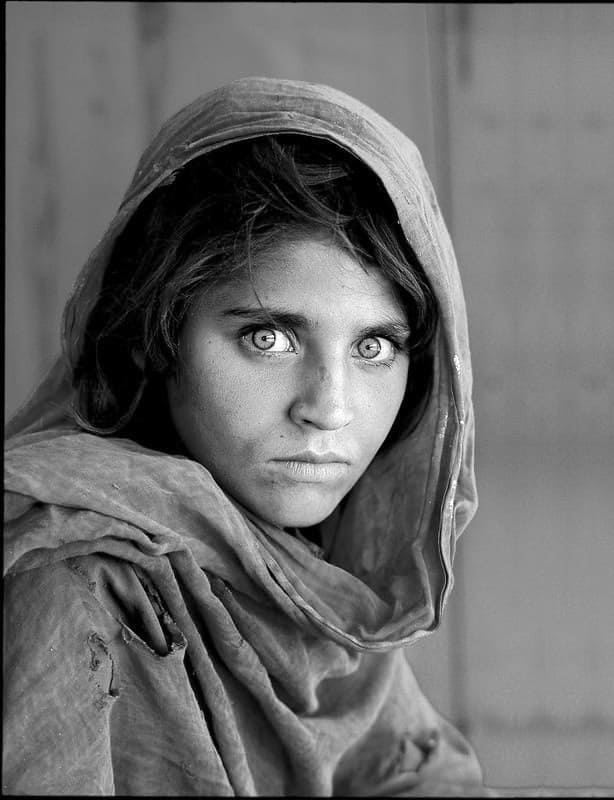
Left: Original color photograph of the “Afghan Girl” by Steve McCurry (1985 / National Geographic). Right: Black-and-white version. This iconic portrait relies on the striking color of her eyes and the vibrant background—converting it to black and white diminishes the photo’s emotional and visual impact. Original photograph © Steve McCurry / National Geographic.
Black and white photography is a tool that elevates photography skills and is also a powerful medium to tell stories
Sometimes you just have to step back and think about what it really takes to get good at something. Just because you have a driver’s license and drive to work every day doesn’t mean you could win a Formula 1 race—even though, technically, it’s the same skill: driving.
Same is true for photography. Just because you’ve been taking photos here and there with your phone for a long time, does not mean that you’ll automatically be good at photography. You need to restructure, build a framework, and start with a solid base if you actually want to get good.
Black and white photography is a robust tool to help you to do this. It’s also one of the most powerful media in the world, capable of influencing millions of people when done right.
Shooting street photography in black and white isn’t easier than shooting in color. It’s actually harder. And that’s the whole point. Learning is hard, but the results are worth the effort.
Conclusion: Black and White is a Creative Ally
Black and white isn’t a limitation—it’s a tool. It forces intentionality, sharpens your eye, and elevates storytelling.
For street photographers, black and white turns the mundane into something poetic. Shadows, gestures, little details—they suddenly matter. Your images stop being just documentation and start actually mean something.
Of course, it depends on the genre. Not every type of photography benefits, but for street work, black and white is a secret weapon.
FAQs: Black and White Photography
Why do many street photographers prefer black and white?
The goal in most street photography is simple: capture the essence of the moment—make something more interesting than what actually happened.
In that context, color stops being a key element and starts to get in the way. It distracts.
Black and white, on the other hand, forces you to focus on what really matters. It pushes you to think about composition, contrast, and emotion—the things that make a story worth capturing.
Does shooting in black and white make me a better photographer?
Absolutely not. It’s a choice, not a skill.
The act of shooting black and white is what makes all the difference. In the right context—like street photography—it forces you to focus on what matters and cut out distractions.
When you know the only thing coming out of your camera is a black and white image, you start to think differently. And that thinking can make you a better photographer.
Should I shoot in black and white or convert later?
If your goal is to use black and white to improve your approach to photography, it’s always better to shoot in black and white from the start, not shoot in color and convert later.
With a digital camera, you can do both. Most modern cameras let you set the shooting mode to black and white, so your live preview shows exactly what you’ll get.
Shoot in RAW format. When you open the RAW file in software like Adobe Lightroom or Affinity Photo, it will still appear in color, because RAW always keeps the hue data, no matter what shooting mode you chose.
And if you want, you can always convert it to black and white in post-processing. The choice is yours, but shooting in black and white from the start forces your eye and your thinking to adapt.
What are the advantages of black and white street photography?
Black and white photography offers several benefits:
Timelessness: It gives photos a classic, enduring quality.
Focus on subject: Without color, the viewer’s attention is drawn to the subject and composition.
Emotional impact: Monochrome images can convey mood and atmosphere more intensely.
Simplification: It removes visual clutter, highlighting essential elements.
Are there any disadvantages to black and white photography?
Black and white photography definitely has its limitations.
For some types of photography, color is crucial. Think sports, food, wildlife, or headshots—color plays a big part in making those images work.
How can I improve my black and white street photography?
Shoot in RAW: It gives you way more flexibility when you’re editing later.
Focus on light and shadows: Contrast is everything in black and white.
Start with simple compositions: Trying to tell a complicated story with too many subjects can get overwhelming. Stick to simple setups until you’re ready to layer more complexity.
Study both techniques and history: Photography isn’t just a science—it’s an art. You can master all the technical stuff, but you won’t get far if you ignore history and other photographers. Balancing the two helps you quickly “see” what you want to capture on the street.
Is black and white photography just for nostalgia?
Not at all. Sure, black and white can feel nostalgic, but it also gives you a fresh way to interpret the present. Black and white photography isn’t just a medium where you “remove the color.” It’s much more than that. Choosing to shoot in black and white lets you see a completely different world than if you had shot in color.

